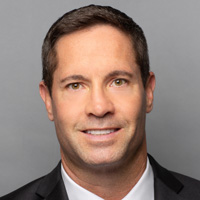The 60/40 Portfolio Is Dead. Long Live 33/33/33.
A portfolio of stocks and bonds used to be the gold standard, but it just doesn’t cut it anymore. It’s time to throw some alternative investments into the mix.


I’ve read countless articles from fellow financial advisers and investment gurus arguing for and against the traditional 60/40 (stock/bond) portfolio allocation. While many advisers have been trained to regard the 60/40 as a benchmark from the early days of their careers, a low interest rate environment means we need to get more creative.
We are living in a new world. The 60/40 was introduced nearly 70 years ago. Times have changed. In case there is any question about where I stand, put me down as firmly on the side of those who are ready to retire that strategy for good.
The new benchmark is 33/33/33; with your assets divided equally between stocks, bonds and alternatives.

Sign up for Kiplinger’s Free E-Newsletters
Profit and prosper with the best of expert advice on investing, taxes, retirement, personal finance and more - straight to your e-mail.
Profit and prosper with the best of expert advice - straight to your e-mail.
Why is the 60/40 stock and bond portfolio outdated?
It has been covered broadly in the media that stock valuations have become untenable. Inflation is at its highest level in 30 years and rates are expected to gradually increase in the years ahead. Mix those ingredients together and you’d be hard-pressed to find an analyst predicting the kind of returns we’ve seen in the public markets over the past decade.
So, what’s the fix? This is where illiquid assets (alternative investments) — such as venture capital, real estate, private equity and private debt — need to enter the chat. Alternative asset classes provide the benefit of diversification (which is why many investors remain in fixed income) along with a low correlation to stocks. With everyone looking for an inflation hedge ... you are welcome.
Research in J.P. Morgan Asset Management’s “Guide to Alternatives” revealed that allocating just 30% to alternatives in your portfolio can substantially increase your annual returns, while simultaneously strengthening portfolio stability and decreasing risk.
Keep in mind that investment in these assets must be done in conjunction with cash-flow planning. As illiquid assets can’t be quickly sold, or liquidated, they may not be for everyone. But for high-net-worth and affluent investors who don’t need cash in the short-term and are willing take on some temporary illiquidity, alternative investments make sense. Private markets are simply more attractive than stocks. Beyond generating returns, these alternatives also provide greater opportunity for building generational wealth.
Practical examples
Let’s take real estate for example. Real estate can serve as a supplement to fixed income as a vehicle to improve yield for investors with a lower risk tolerance, while providing a hard asset that presents an opportunity for real income. At Manhattan West, we invest through a fund model and focus on mainly multi-family and industrial, but more broadly, there are several REITs that can be purchased to gain similar exposure to real estate.
And then there’s venture capital and private equity, which may be a better fit for an investor who is comfortable taking on more risk and isn’t looking for investment income right away. Allocating a small portion of a portfolio to an early-stage venture capital opportunity makes sense if time is on your side. It may provide a potential for more growth than stocks, especially as companies are staying private for longer and going public at higher valuations. We tend to invest in both early stage as well as late stage (pre-IPO) companies. It’s important that you invest through a financial adviser who has access to an experienced team connected to investment opportunities in both private equity and venture capital. Information about private investing companies is not typically available for public consumption. With the help of your financial adviser, you can determine, on a case-by-case basis, whether a private equity or venture capital investment is right for you.
An alternative investment strategy works best when personalized to the needs of the individual. There is no one-size-fits-all approach to investing, and that includes alternatives. Any financial adviser worth their salt will customize your portfolio with your risk tolerance and time horizon top of mind.
So why isn’t my financial adviser offering alternatives?
Scale. Financial advisers often choose to pile their clients into liquid model portfolios because it’s easier for them to scale without having to truly customize based on each individual client's needs. There is an alarming trend bubbling in the wealth management industry in which firms try to gather as many assets as possible – put the investment side on auto-pilot – so they can spend their time and attention on growth or a sale.
Whether these advisers have deprioritized efforts to include alternative assets in customized portfolios due to a traditional – and frankly outdated – approach to allocation, or out of selfishness, is beside the point. Your portfolio should be tailored to your aspirations and goals, and it may be time to start challenging your financial counsel, asking some tough questions.
Embrace 33/33/33 as the new benchmark. Because Modern Portfolio Theory doesn’t feel so modern anymore, does it?
Get Kiplinger Today newsletter — free
Profit and prosper with the best of Kiplinger's advice on investing, taxes, retirement, personal finance and much more. Delivered daily. Enter your email in the box and click Sign Me Up.

Tyler Robuck is a managing director–financial adviser at Manhattan West, where he provides tailored wealth management solutions to high-net-worth clients, entertainers and small-business owners. He brings a wealth of experience, knowledge, energy and compassion to help clients achieve their goals. Having worked through myriad market cycles, he prides himself on being a clear and steady voice in periods of growth and volatility. Outside work, Robuck enjoys meditation and is a yogi.
-
 Stock Market Today: Stocks Gain on Tech, Auto Tariff Talk
Stock Market Today: Stocks Gain on Tech, Auto Tariff TalkThe Trump administration said late Friday that it will temporarily halt tariffs on some Chinese tech imports.
By Karee Venema
-
 Sam's Club Plans Aggressive Expansion: Discover Its New Locations
Sam's Club Plans Aggressive Expansion: Discover Its New LocationsSam's Club expansion plans will open up to 15 new stores each year. Learn where they plan to open in 2025.
By Sean Jackson
-
 How Baby Boomers and Gen Xers Are Redefining Retirement Living
How Baby Boomers and Gen Xers Are Redefining Retirement LivingBoth generations need to embrace change and leverage real estate as a dynamic asset in their retirement planning. Here's how financial advisers can help, too.
By David Conti, CPRC
-
 How Good Advisers Manage Risk in Challenging Markets
How Good Advisers Manage Risk in Challenging MarketsThey understand the difference between what might be real challenges to an investor's strategy and fear brought on by market volatility.
By Ryan L. Kirk, CFA®
-
 Financial Planning's Paradox: Balancing Riches and True Wealth
Financial Planning's Paradox: Balancing Riches and True WealthWhile enough money is important for financial security, it does not guarantee fulfillment. How can retirees and financial advisers keep their eye on the ball?
By Richard P. Himmer, PhD
-
 A Confident Retirement Starts With These Four Strategies
A Confident Retirement Starts With These Four StrategiesWork your way around income gaps, tax gaffes and Social Security insecurity with some thoughtful planning and analysis.
By Nick Bare, CFP®
-
 Should You Still Wait Until 70 to Claim Social Security?
Should You Still Wait Until 70 to Claim Social Security?Delaying Social Security until age 70 will increase your benefits. But with shortages ahead, and talk of cuts, is there a case for claiming sooner?
By Evan T. Beach, CFP®, AWMA®
-
 Retirement Planning for Couples: How to Plan to Be So Happy Together
Retirement Planning for Couples: How to Plan to Be So Happy TogetherPlanning for retirement as a couple is a team sport that takes open communication, thoughtful planning and a solid financial strategy.
By Andrew Rosen, CFP®, CEP
-
 Market Turmoil: What History Tells Us About Current Volatility
Market Turmoil: What History Tells Us About Current VolatilityThis up-and-down uncertainty is nerve-racking, but a look back at previous downturns shows that the markets are resilient. Here's how to ride out the turmoil.
By Michael Aloi, CFP®
-
 Home Insurance: How to Cut Costs Without Losing Coverage
Home Insurance: How to Cut Costs Without Losing CoverageNatural disasters are causing home insurance premiums to soar, but don't risk dropping your coverage completely when there are ways to keep costs down.
By Jared Elson, Investment Adviser